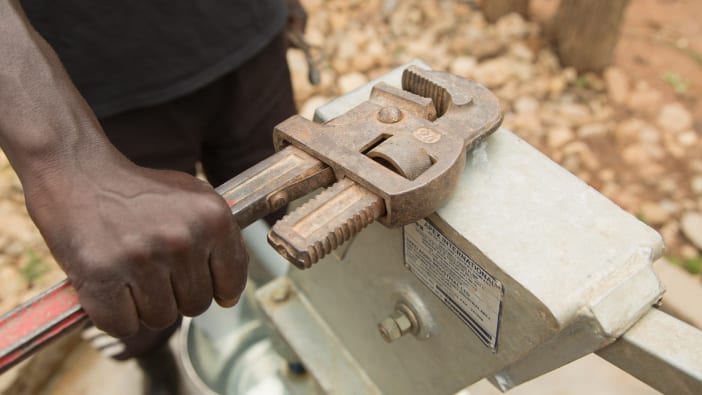A collection of ideas on storing and using it..
Moulds for water jars
The water department in the Diocese of Kigezi, Uganda uses specially shaped wooden moulds which fit together to form the shape of a small water jar. Clay is used to smooth any gaps before plastering over the moulds with layers of cement. Once the mortar has set firm (within a day) the moulds can be removed through the lid of the jar. The Department has about ten similar sets of moulds which can be reused over and over.
Water Dept, Diocese of Kigezi, PO Box 3, Kabale, Uganda.
Ferrocement tanks
Andrew Maclean in Tanzania writes to say that he agrees with Willem Klaassen’s views on moulds (Footsteps 32)…
We make up a mould for the walls and roof together and then plaster the whole thing in one day. Then we strip out the mould through an access hatch in the roof and plaster the inside. Moulds let you press the mortar much harder, resulting in stronger walls and fewer cracks.
However, our tanks do not leak! In my experience the usual cause of leakage is using too much water in the mortar (this makes it weak and porous). If the mortar is shiny after mixing then there is too much water – it should be dull. Use as little water as possible to make a mix that can be plastered on.
Andrew Maclean, MAF, Tanzania. E-mail: [email protected]
Simple drip irrigation
SECADOS in Guinea, West Africa use a very simple drip irrigation method. A plastic bucket is tied up at shoulder level and a plastic hose is forced into a very small hole in the base. Small holes are made in the hose pipe (a heated nail works well) which is laid on the ground in vegetable beds. When water is poured into the bucket, it slowly soaks into the soil. Watering is much quicker and less water is wasted by evaporation.







